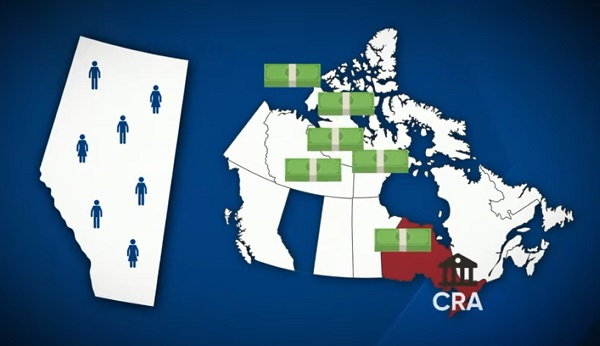Alberta
CFL faces very difficult future
This is an unpleasant reality: The Canadian Football League faces an extremely difficult future.
In truth, it may not have a future at all.
In the few days since commissioner Randy Ambrosie finally confirmed the obvious that the 2020 season had been only a figment of many imaginations, there has been a rush of both critics and devout supporters to explain at least partially the many reasons for the CFL’s arrival on the edge of final, fatal league disappearance.
Most of the observers are content to point out that large markets such as Toronto and Vancouver lost their way after National Football League franchises were established in nearby Buffalo (the Bills) and Seattle (the Seahawks),creating a painful reduction of several million dollars in gate revenue each year.
If only that were true . . . but it is not.
Much more damage has been done through simple — but very thorough — disrespect of the game by the owners and presidents and general managers positioned to grow Canadian football rather than to destroy it.
At one point, the Canadian brand of football was vastly different from the U.S.-based game although both admittedly grew from the foundation of British rugby.
In the 1950s, after decades of evolution, the biggest obvious disparity remained the difference in on-field lineups: 12 in Canada, 11 in the United States. The extra players provided more blocking and, often, more of a ground attack. Although imports had been approved, there were still more Canadians — many more — on every roster.
At that time, the Americans allowed unlimited blocking on every play; in Canada, no legal interference was allowed more than 10 yards downfield. Blocking on pass plays was a non-no in this country for many years.
This space, and many more, have wallowed in the old truth that Canada once paid U.S. imports more than the NFL did. Witness,for example, all-time Edmonton Eskimo great Jackie Parker; he and other imports signed here because the Canadian dollar had more value on the market than the American buck did.
Former Calgary Stampeders stars Earl Lunsford and Don Luzzi — all-star fullback and two-way tackle — entered the CFL a few years later for similar reasons. They played when the single point had strategic importance. Now, it is considered both unique and insignificant.
Veteran punt returners like 5-foot-8 Gene Wlasiuk of Saskatrchewan boasted wryly that they entered the league as six-footers but shrank when swarmed by tacklers. No blocking on punt returns, back then.
During this general time frame, U.S.- trained coaches and general managers became a majority. Jim Finks in Calgary, himself once a starter at quarterback in the NFL, heard claims that the CFL players were “too small”: to be real football players. He countered by pointing out the NFL had finally followed the CFL in using elusive runners and receivers; he was right. By and large, Canadians didn’t notice.
Hugh Campbell created a dynasty in Edmonton by making sure Canadian players had some ability, and then using them in every situation.
Through it all, import limits grew from a handful to today’s situation where rosters are clogged with more unknown U.S. college kids and pro failures than ever before. Alleged experts present the obnoxious theory that the CFL should openly become a farm system for NFL teams.
Misguided commissioner Ambrosie saluted his entry to the new job by proposing that the CFL should be loaded, as quickly as possible, with citizens from Greece, Germany, Scotland, or any other nation with strong, well-conditioned athletes who might be better than the kids graduating year after year from Canadian universities.
History shows that the CFL has spent so much time emulating the NFL and seeking “gimmicks” to boost profits that the road to any future was lost entirely. The most devastating example of contempt for their own product came when Herb Capozzi, a former B.C. Lions player, wrote a nationally-syndicated weekend column in which he insisted “Canadians Play Lousy Football.”
Later, he operated the Lions franchise and ultimately the entire league.
No further questions needed.
Alberta
Temporary Alberta grid limit unlikely to dampen data centre investment, analyst says
From the Canadian Energy Centre
By Cody Ciona
‘Alberta has never seen this level and volume of load connection requests’
Billions of investment in new data centres is still expected in Alberta despite the province’s electric system operator placing a temporary limit on new large-load grid connections, said Carson Kearl, lead data centre analyst for Enverus Intelligence Research.
Kearl cited NVIDIA CEO Jensen Huang’s estimate from earlier this year that building a one-gigawatt data centre costs between US$60 billion and US$80 billion.
That implies the Alberta Electric System Operator (AESO)’s 1.2 gigawatt temporary limit would still allow for up to C$130 billion of investment.
“It’s got the potential to be extremely impactful to the Alberta power sector and economy,” Kearl said.
Importantly, data centre operators can potentially get around the temporary limit by ‘bringing their own power’ rather than drawing electricity from the existing grid.
In Alberta’s deregulated electricity market – the only one in Canada – large energy consumers like data centres can build the power supply they need by entering project agreements directly with electricity producers.
According to the AESO, there are 30 proposed data centre projects across the province.
The total requested power load for these projects is more than 16 gigawatts, roughly four gigawatts more than Alberta’s demand record in January 2024 during a severe cold snap.
For comparison, Edmonton’s load is around 1.4 gigawatts, the AESO said.
“Alberta has never seen this level and volume of load connection requests,” CEO Aaron Engen said in a statement.
“Because connecting all large loads seeking access would impair grid reliability, we established a limit that preserves system integrity while enabling timely data centre development in Alberta.”
As data centre projects come to the province, so do jobs and other economic benefits.
“You have all of the construction staff associated; electricians, engineers, plumbers, and HVAC people for all the cooling tech that are continuously working on a multi-year time horizon. In the construction phase there’s a lot of spend, and that is just generally good for the ecosystem,” said Kearl.
Investment in local power infrastructure also has long-term job implications for maintenance and upgrades, he said.
“Alberta is a really exciting place when it comes to building data centers,” said Beacon AI CEO Josh Schertzer on a recent ARC Energy Ideas podcast.
“It has really great access to natural gas, it does have some excess grid capacity that can be used in the short term, it’s got a great workforce, and it’s very business-friendly.”
The unaltered reproduction of this content is free of charge with attribution to the Canadian Energy Centre.
Alberta
Alberta Next: Taxation

A new video from the Alberta Next panel looks at whether Alberta should stop relying on Ottawa to collect our provincial income taxes. Quebec already does it, and Alberta already collects corporate taxes directly. Doing the same for personal income taxes could mean better tax policy, thousands of new jobs, and less federal interference. But it would take time, cost money, and require building new systems from the ground up.
-

 Fraser Institute1 day ago
Fraser Institute1 day agoBefore Trudeau average annual immigration was 617,800. Under Trudeau number skyrocketted to 1.4 million annually
-

 MAiD1 day ago
MAiD1 day agoCanada’s euthanasia regime is already killing the disabled. It’s about to get worse
-

 Frontier Centre for Public Policy1 day ago
Frontier Centre for Public Policy1 day agoNew Book Warns The Decline In Marriage Comes At A High Cost
-

 Business1 day ago
Business1 day agoPrime minister can make good on campaign promise by reforming Canada Health Act
-

 Addictions1 day ago
Addictions1 day ago‘Over and over until they die’: Drug crisis pushes first responders to the brink
-

 International1 day ago
International1 day agoChicago suburb purchases childhood home of Pope Leo XIV
-

 Daily Caller1 day ago
Daily Caller1 day agoUSAID Quietly Sent Thousands Of Viruses To Chinese Military-Linked Biolab
-

 Energy1 day ago
Energy1 day agoLNG Export Marks Beginning Of Canadian Energy Independence



